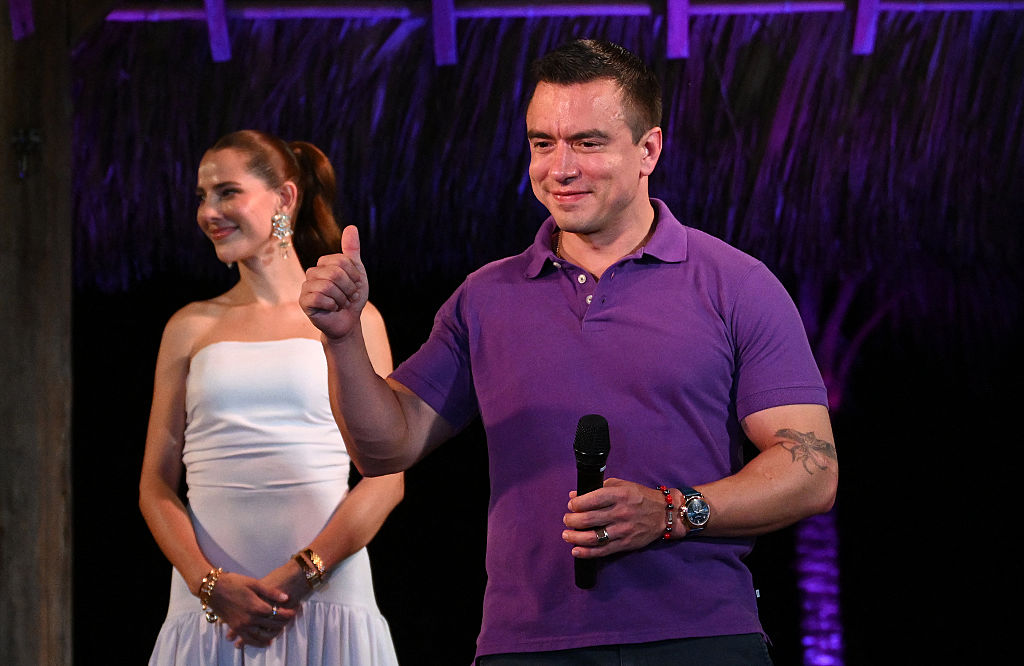Three Decades after Revolution, a Third Term for Ortega?
Three Decades after Revolution, a Third Term for Ortega?
Nicaraguan President Daniel Ortega marked the thirtieth anniversary of the Sandinista Revolution with a call for constitutional reform to pave the way for sequential presidential reelection. The move comes even as neighboring Honduras finds itself in political chaos over similar moves by a deposed leader.
Nicaragua celebrated the thirtieth anniversary of the Sandinista Revolution Sunday, commemorating the 1979 overthrow of the Samoza dictatorship. The once and current President Daniel Ortega also made news when he announced his future plans and called for constitutional reform that would pave the way for presidential reelection. That Nicaragua hopes to join Latin America’s constitutional reform club comes as little surprise as Ortega’s floated the idea previously in recent months. But this latest appeal comes at a time when neighboring Honduras finds itself in the midst of crisis after its now deposed leader attempted similar moves. And while Ortega says holding a constitutional referendum is democracy in action, detractors argue such moves threaten to make him a strongman like the one he helped overthrow three decades ago.
Heads of state in Nicaragua can already seek reelection but not consecutive terms. Ortega himself previously served as president from 1985 to 1990 as a leader in the Sandinista Liberation Front. After losing several elections, he won again in 2006 after making amends and forming an alliance with the Catholic Church and a pact with a former president found guilty of corruption charges. In that election he squeaked by his opponents with 38 percent of the vote. With Ortega commanding less-than-stellar approval ratings and a majority of Nicaraguans opposed to his reelection, one might think Ortega would shy away from chasing another bid. Further doubts may spring up if he looked over his shoulder at the recent chaos set off in Honduras after President Manuel Zelaya was unceremoniously deposed at gunpoint in his pajamas for trying to go ahead with a vote deemed illegal by the country’s main institutions.
The Latin Americanist blog argues that Ortega could be counting on the fact that he commands broader institutional control than did Zelaya. “[B]ecause Ortega is not likely to encounter the type of en masse rejection of his plans that Zelaya did, it will be difficult for his opposition to muster a constitutional rationale for his removal, much less the backing of the necessary powers to carry it out,” according to the post. Still, constitutional reform in Nicaragua requires approval in both houses of the legislature and at least two-thirds support of the 92 deputies in the National Assembly. As Infolatam points out, the Sandinistas would fall short, given that they and their allies hold 47 seats. The next presidential election is scheduled for 2011.
A number of media outlets look back on the promise of the Sandinista Revolution, the difficult relationship with Washington, and Sandinista divisions 30 years later (See Clarin, GlobalPost, and BBC Mundo). The Los Angeles Times examines two sides to the Nicaraguan coin, both in terms of how Ortega has kept and lost supporters as well as signs of both progress and stagnant growth. As the article explains, Managua is far safer than many other Central American capitals, yet Nicaragua remains one of the poorest countries in Latin America.
The country felt the pinch when the U.S.-funded Millennium Challenge Corporation pulled $62 million in aid for failing to address concerns that the November 2008 midterm elections were fraudulent and skewed in favor of Ortega's allies. Ortega’s close ally Venezuelan President Hugo Chávez anted up $50 million to replace the funds.
Learn more:
- In the Summer 2009 issue off Americas Quarterly, Dartmouth's John M. Carey examines the debate about Latin America’s “Re-eleccionistas.”
- Website of the Nicaraguan presidency
- UN’s Economic Commission for Latin America and the Caribbean’s report on Latin American poverty rates.
- Nicaragua's La Brújala offers a timeline of major events since 1979 revolution, including the Sandinista literacy campaign and the Reagan administration's support for the Contras.
- Revista Perspectiva blog covers the two celebrations occurred Sunday, one was Sandinista and one that some called “orteguista.”
- El País' Nicaragua topics page with statistics and news coverage about the country.
- July 2009 report by the Committee to Protect Journalists about the Ortega government's attacks on press freedoms.








